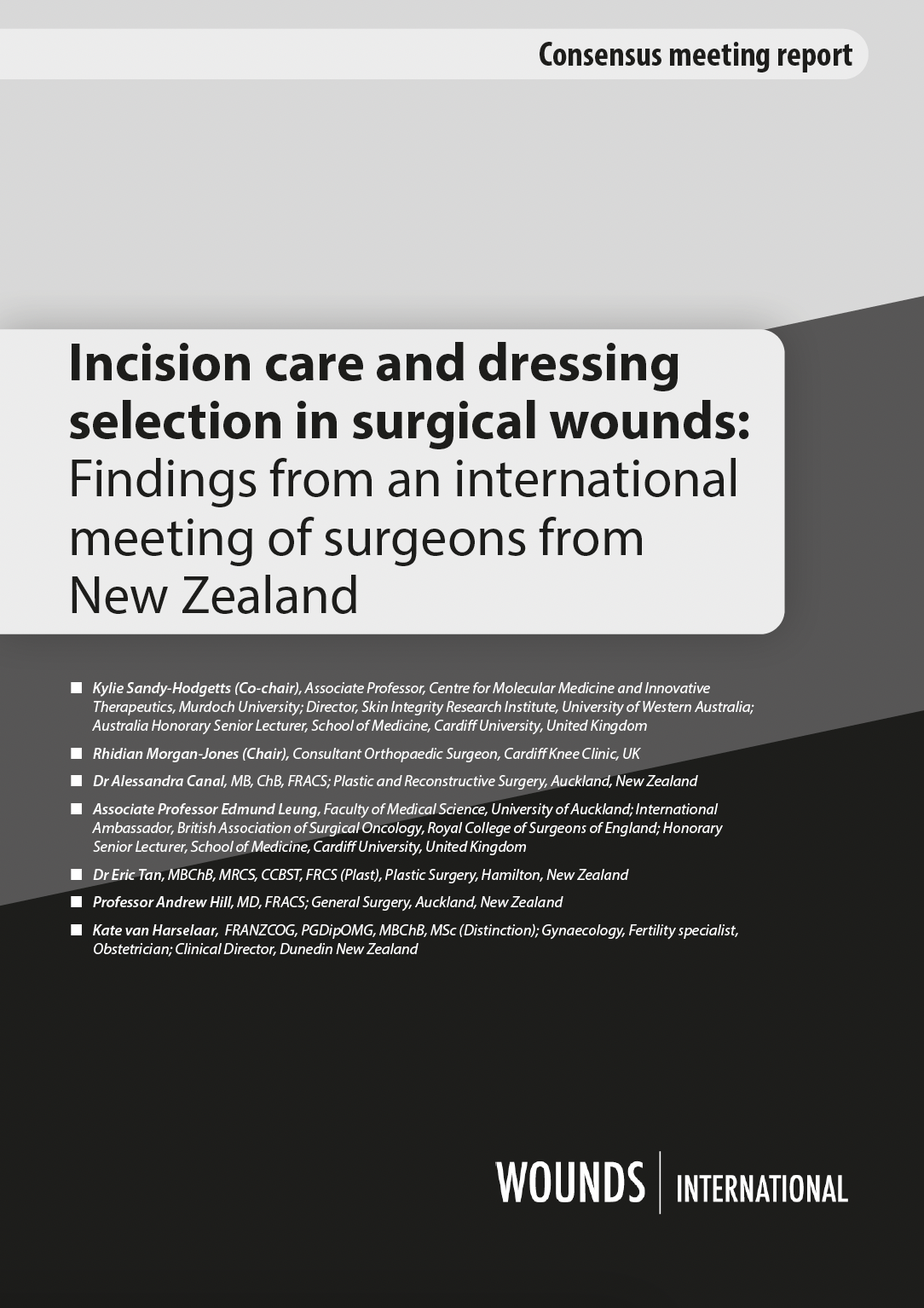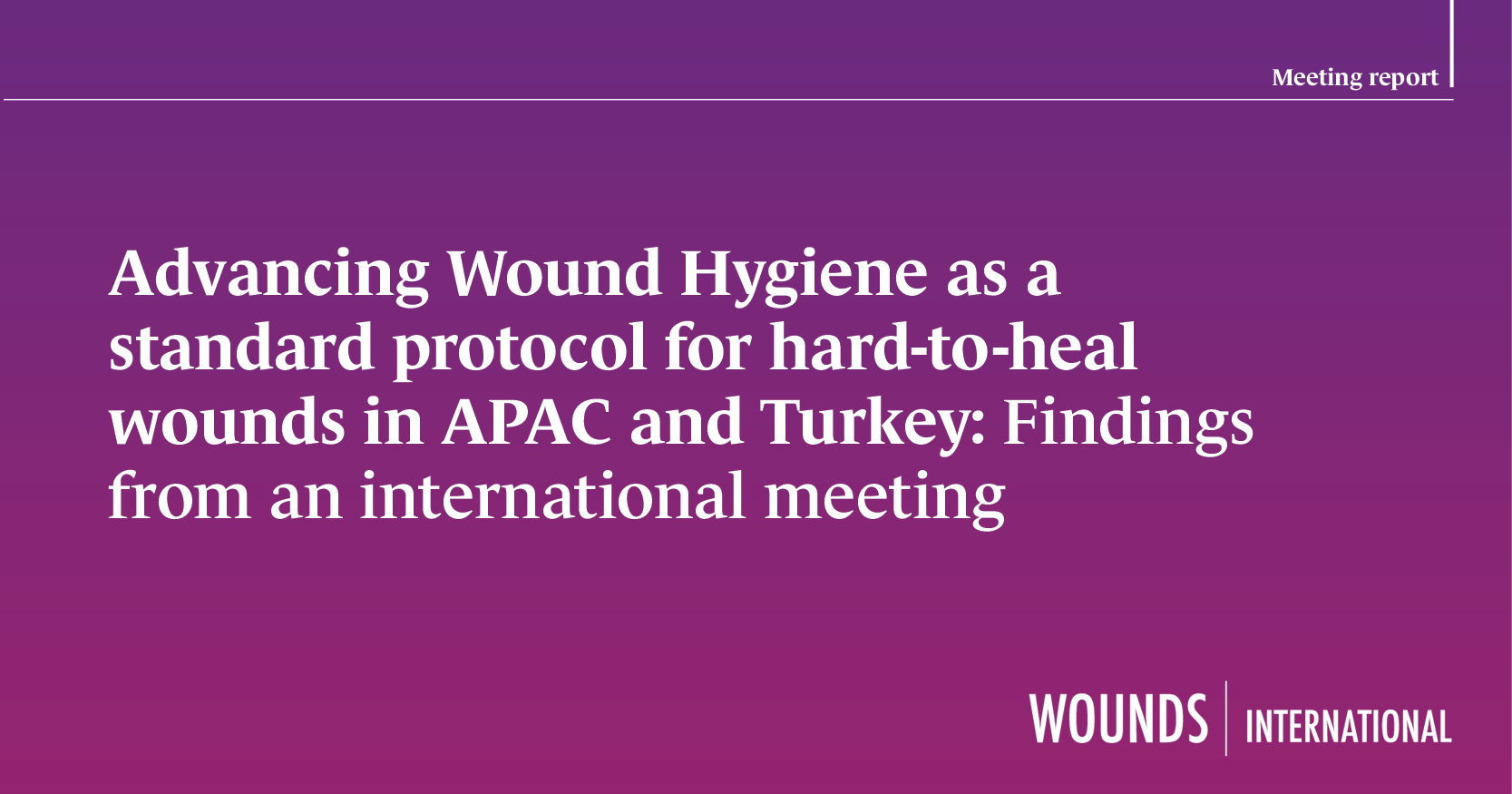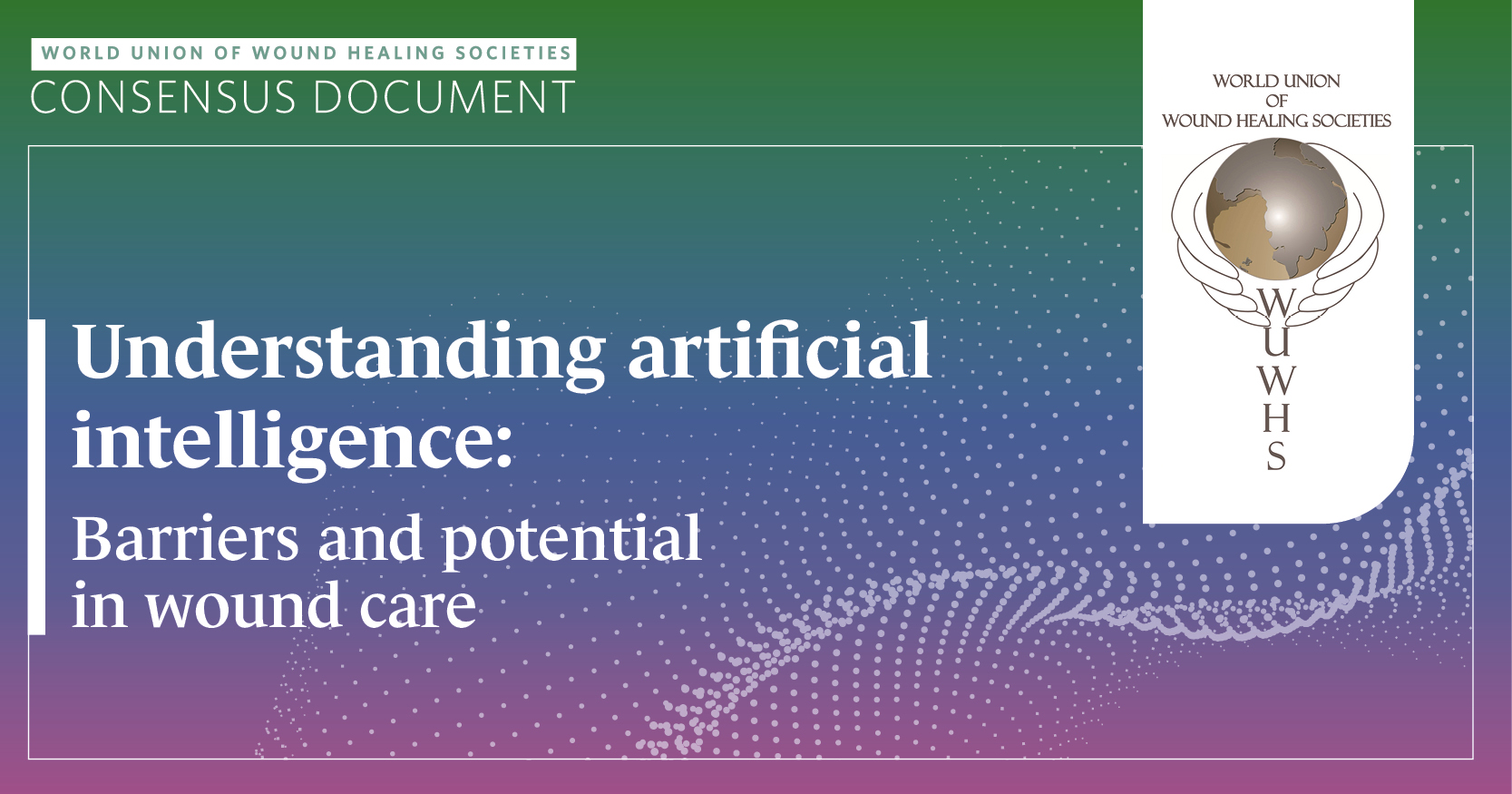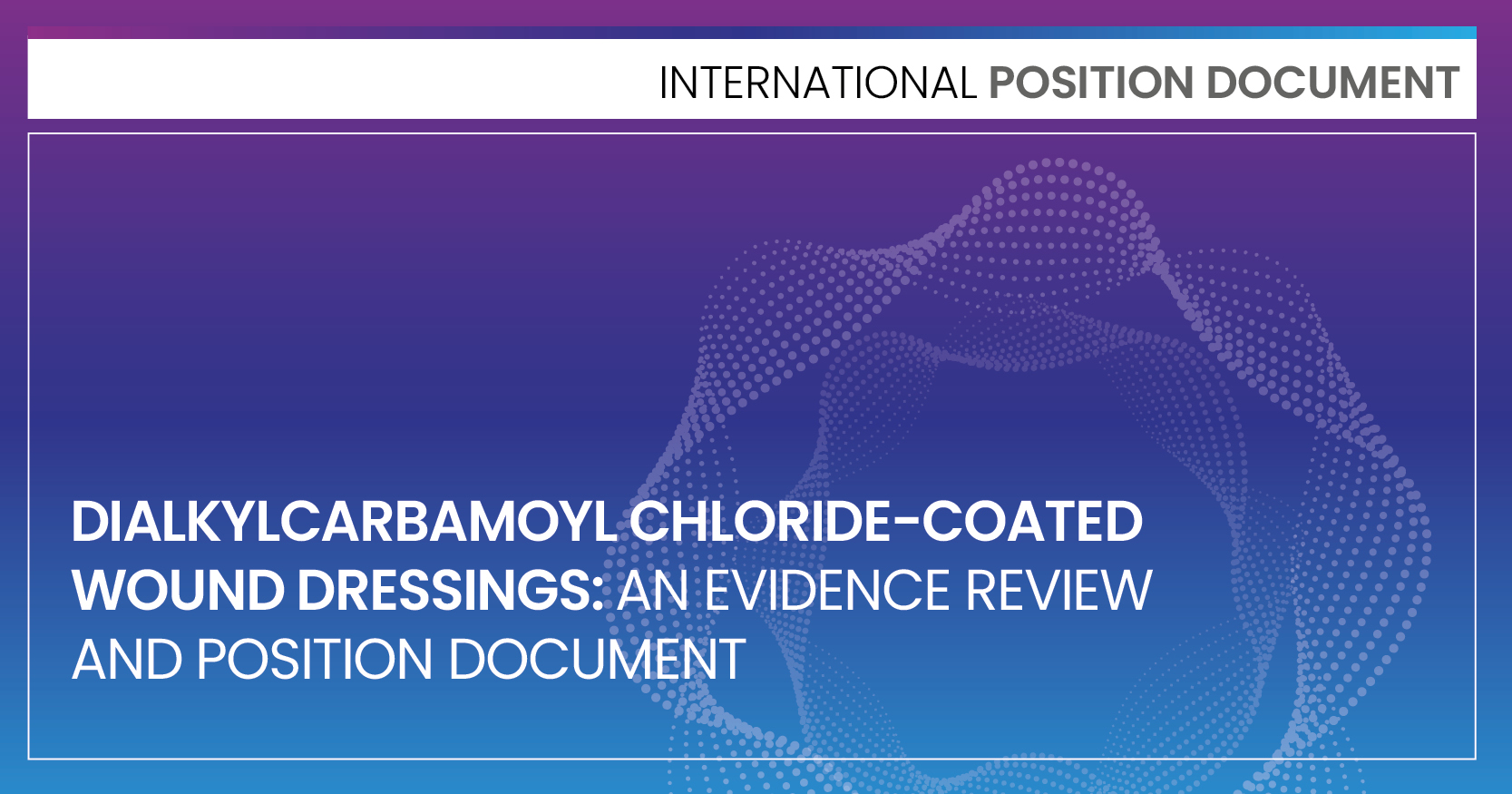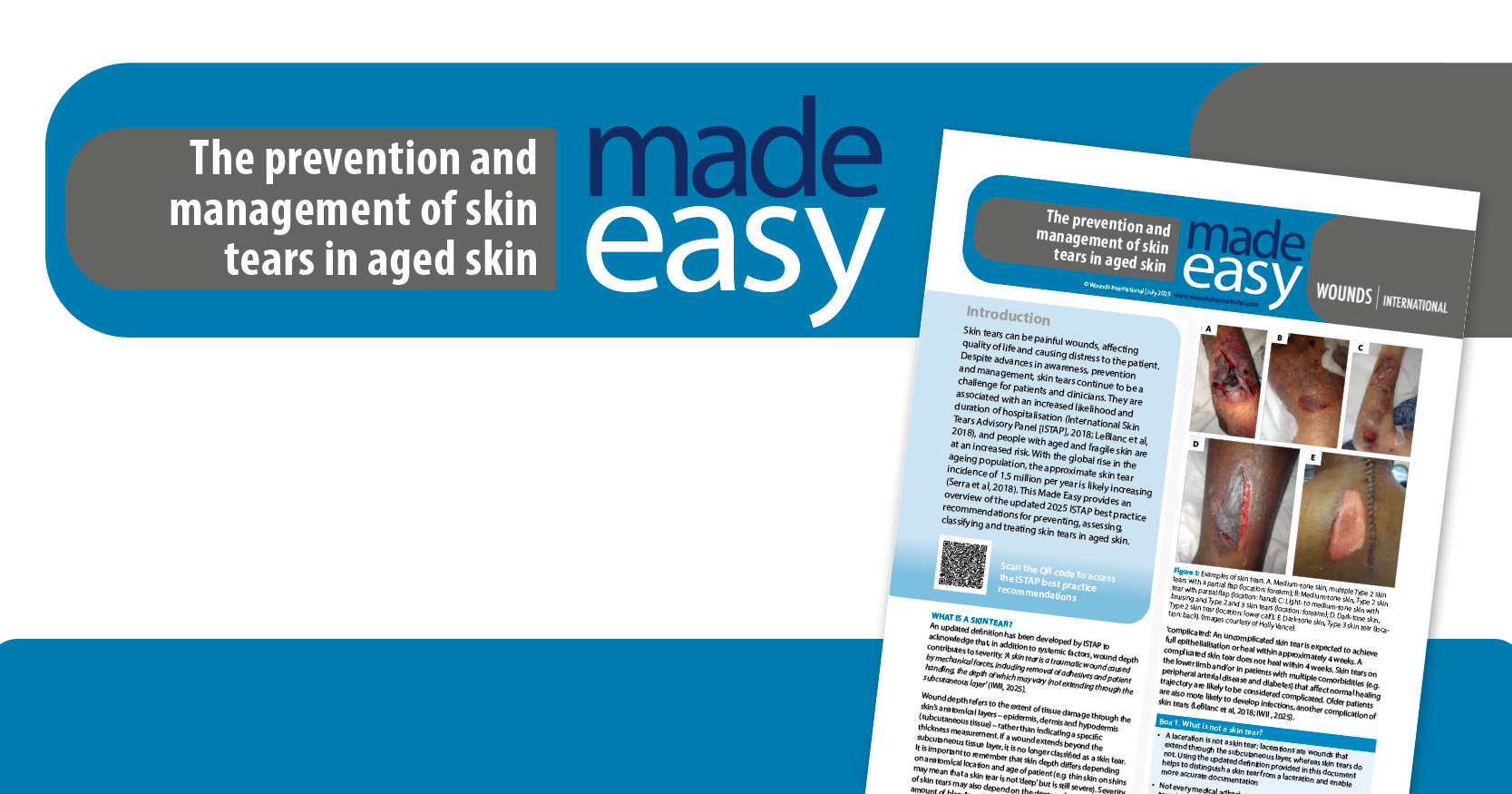Surgical wound complications such as surgical site infection (SSI) and surgical wound dehiscence (SWD) are considerable worldwide healthcare concerns, which result in increased risk of morbidity and mortality (Allegranzi et al, 2011; Rickard et al, 2020; Sandy-Hodgetts et al, 2022a).
Globally, the increase in antimicrobial resistance poses clinical challenges in the treatment and prevention of SSI and SWD and requires the use of novel approaches in the clinical setting. Antimicrobial stewardship strategies should be in place to reduce the overuse of antimicrobials in post-operative incision management (Sartelli et al, 2016).
Contracting an SSI frequently results in a negative impact on the physical and mental health of the individual, a loss of productivity (Badia et al, 2017) and is commonly associated with prolonged postoperative hospital stays, which may necessitate additional surgical procedures, resulting in a higher economic burden (Cassini et al, 2016).
Although these are global issues, different regions and countries have different geographical and cultural considerations for post-surgical incision care, as do different patient populations, necessitating fit-for-purpose solutions.
In February 2024, a panel meeting of surgeons based in New Zealand was convened in Auckland to examine post-surgical care and dressing selection for incisions closed with primary intention. The attending surgeons worked across New Zealand and represented a range of surgical disciplines, united by a passion for wound care and improving patient outcomes.
The surgical panel builds on work by other international surgical panels [Box 1], with the same following aims:
- To clarify local views on post-surgical care and dressing selection in surgical wounds closed with primary intention
- To discuss and reach a consensus on recommendations for local practice in key areas of optimisation for wound healing pre-, peri- and post-operatively
- To discuss and agree on the properties of the ‘ideal’ dressing in managing post-surgical incisions.
Approaches to post-surgical incision care
The New Zealand panel began by reflecting upon their own practices and their varying approaches to incision care, including selecting a wound dressing and local protocols for wider theatre management.
It was noted that ‘incision care’, as opposed to ‘wound care’, is a new term for some members of the group, in the context of reducing infection risk and improving patient outcomes post-surgery. It was also noted, anecdotally, that New Zealand figures for post-surgical wound infection appear to be comparatively better than other locations around the world; it was suggested this could be due to the manner in which post-surveillance data for wound infections are tracked and coded within the country.
There was some variation in terms of approach to incision care, with one panel member stating that they “micromanage every stage of the journey for the patient” from anaesthesia, through post-anaesthesia recovery and beyond, including dressing choice; while another said they leave wound dressing selection to the nursing staff, with wound infection management low on their list of priorities. Overall, there appears to be reasonable uniformity in decision-making, with a degree of personal choice remaining for the clinician, where desired.
The panel reported an evolution in post-surgical incision care in New Zealand, which has moved away from a “top-down approach,” with increasing encouragement of open-mindedness. One panel member stated that decision-making tends to be didactic, based on willingness of their colleagues to share their experiences.
Dressing selection
Members of the panel stated their approach to dressing selection is “dynamic, not rigid,” with choice of dressing influenced by a number of interplaying factors, including:
- The site of the wound
- The type of surgery
- The complexity of the patient’s existing comorbidities and risk factors
- Expectations of the theatre environment, e.g. perceived lack of theatre discipline
- The healthcare setting, e.g public versus private
- The patient’s personal choice, e.g. some may express a desire not to be able to see the wound through a transparent dressing.
The panel largely prefer to use simple dressing regimens (e.g. “steristrips, with a small padded dressing and a waterproof dressing over the top”), but may choose an advanced dressing in certain cases. For example, a negative pressure dressing may be used (if suitable for the incision location) where the patient presents with multiple comorbidities (e.g. diabetes or high BMI), or the wound is particularly complex (e.g. has been extensively debrided). In general, there was agreement that the chosen dressing should stay in place for as long as possible to allow for optimal wound healing, although desired wear time was variable.
The benefits of undisturbed wound healing (UWH), a relatively new concept in wound management, depends on the patient and their circumstances for suitability. In appropriate clinical situations, longer wear time may result in a range of benefits such as:
- Optimised healing if the wound remains undisturbed and is on a healing trajectory
- Reduced risk of contamination, potential infection and medical adhesive-related skin injuries
- Potential reduction in treatment cost and time (Brindle and Farmer, 2019).
Several of the surgeons noted they are routinely making dressing choices that are not evidence-based, but are based on their own experience and work for them. There was discussion around the lack of high-quality evidence to support use of specific advanced dressings for prevention of SSIs. Indeed, a Cochrane review published in 2016 found that there was no advantage of one advanced dressing over another (Dumville et al, 2016); while the World Health Organization SSI prevention guidelines state that the advanced dressings studied had neither benefit nor harm compared with standard dressings (WHO, 2016). All the surgeons agreed there is a need to answer these questions moving forwards, incorporating studies that look at the potential benefits of negative pressure wound dressings.
Managing infection risk
The New Zealand panel agreed that identifying risk factors that increase likelihood of post-surgical wound infection is important, with a particular emphasis on patient education in the presence of comorbidities. Notably, thyroid issues, diabetes, high BMI, anaemia, and whether the person smokes or vapes. It was also noted that since New Zealand is a sparsely populated country, consideration needs to be given to post-discharge surveillance and education, given many patients are travelling long distances for treatment and may live in rural locations.
The panel largely agreed that if a patient has a high BMI (over 35), they begin to consider the potential clinical consequences of surgery. Some panel members stated that they do not operate on patients with a BMI greater than 30, although this appears to be a resource-driven decision, rather than clinical judgement.
Properties of an ideal wound dressing
The purpose of a wound dressing for post-surgical incisions is to protect the wound from the external environment, while providing an optimal environment for wound healing. Surgical panels at previous consensus meetings around the world have agreed on a comprehensive list of properties for the ideal wound dressing, which include:
- Flexibility – does not impede patient’s movement, providing elasticity to avoid pulling or blistering, particularly over joints
- Well-fixed to the skin on application once the skin is dry after being disinfected, and remains adhered even if there is sweating
- Absorbent of wound exudate (retains/locks in fluid) – no exudate leakage should occur from the dressing to the periwound skin
- Protective of the surrounding skin to reduce risk of blistering or irritation, and provides patient comfort, with minimal discomfort or pain during removal
- Waterproof to provide a good seal/barrier function and enable the person to shower
- Eliminates ‘dead space’ between the wound bed and dressing, where necessary, to avoid exudate pooling
- Easy to use and remove by patients and all care staff, to ensure consistent care
- Transparent dressing borders to allow for observation of the surrounding skin.
The New Zealand panel suggested several additions to this list. Firstly, building on the concept of patient comfort, one member suggested the ideal dressing should have a level of ‘cushioning’ or ‘bulk’ to it. Another mentioned that dressings (particularly for his bariatric patients) should be semi-occlusive, allowing for aeration of the wound.
This panel also discussed at length the need to consider sustainability and the impact of waste, both in relation to the choice of dressing and managing the wider theatre environment. In terms of dressing choice, this means thinking about how dressings could be used for longer, be compostable in design, or even reusable; and considering the dressing’s packaging. In terms of the wider theatre environment, this means consciously choosing to use fewer resources (e.g. “I do one less thing per operation, like using one less packet of swabs”) without compromising patient care.
Finally, building on discussions from the Australia panel meeting, this group noted that the dressing must be affordable within the context of the healthcare system. This means thinking about the full cost to heal the wound, not simply the cost of the dressing itself. For example, using one advanced dressing for seven days may be expensive, but may compare cost-effectively with choosing a standard dressing that has to be changed multiple times in the same time period, with all the associated hidden costs of doing so (e.g. saline, gloves, time to change the dressing).
Sustainable incisional wound care practices and carbon footprint
The New Zealand panel discussed the increasing waste from medical consumables used in procedures, particularly from multiple dressing changes, and its impact on the environment and sustainability in clinical practice. The panel agreed that, where appropriate, frequent dressing changes should be minimised due to the associated waste from dressing packs, sterile equipment, dressings and packaging materials. The panel also reflected on the United Nations Sustainability Goals (UNSDG 3 and 12; UN DESA, 2018), noting that reducing the frequency of dressing changes can positively impact the environment and reduce the carbon footprint. They agreed that this approach should be addressed on a case-by-case basis, although in Class I procedures, frequent dressing changes may be unnecessary and a change in practice might be required (Lee and Lee, 2022; Singh et al, 2021).
Conclusion
Post-surgical care varies by region depending on several factors, including geography, healthcare system implications, cultural considerations and patient preferences. This panel discussed the importance of open-mindedness and willingness to learn from experiences of colleagues, noting that the approach to SSI prevention is multi-factorial, with many additional factors not discussed during this session. Additionally, the panel discussed the considerations regarding excessive dressing changes, their impact on sustainable practices, and the associated carbon footprint, highlighting that changes to current practices are required. The panel agreed that although ‘incision care’ is a new term for many of them, the importance of optimising post-surgical care for wounds remains crucial.

